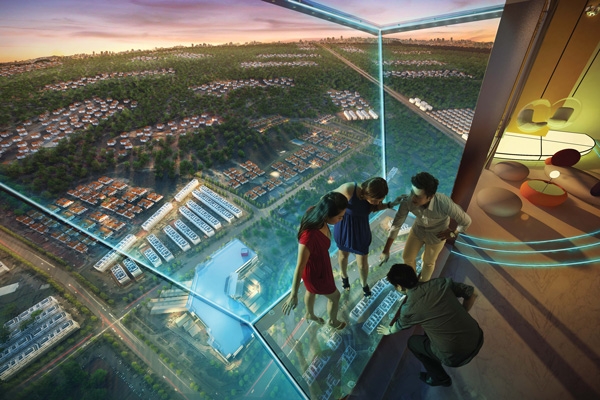by Yvonne Yoong
TOWNSHIPS naturally take time to transform, and Seri Kembangan, once a backwater in Selangor, is no different. However, its growth has been partially accelerated by neighbouring Puchong, which has grown exponentially in recent years.
Established as the Serdang New Village in 1952, during the height of the communist Emergency, the area was close to rubber estates and the jungle. Most residents at the time earned meagre incomes as mining workers and rubber tappers within the area.
Puchong was not any better. Narrow roads ran through its estates and villages up to the 1980s with major infrastructure works beginning in earnest towards the 1990s.
Its popularity was boosted by big property developers including SP Setia Bhd, Mah Sing Group Bhd, IOI Properties Group Bhd, and boutique players like Trinity Group Bhd.
Development in the area was also enhanced by better road connectivity, and more recently, the light rail transit (LRT) extension.
Although these developers enjoyed enthusiastic responses to their developments in Puchong, the township, having matured significantly, has limited land banks for future developments.
This largely created a spillover effect with Trinity Group and other developers turning their attention to surrounding areas such as Seri Kembangan.
The highway factor
Seri Kembangan's growth is boosted by the many existing and upcoming access roads, says Trinity Group CEO Datuk Neoh Soo Keat.
The area is accessible via the Lebuhraya DamansaraPuchong (LDP), North Klang Valley Expressway (NKVE), Besraya Highway, Maju Expressway (MEX) and the proposed SerdangKinraraPutrajaya Expressway (SKIP).
“To many, Seri Kembangan town has its bottleneck, with massive traffic congestion due to the complicated route system. However, we see this as an opportunity due to the mass population and statistics that show both these areas along Serdang and Seri Kembangan have a catchment of almost 400,000 people last year,” he says.
Taking into account the 1.4 million population in the surrounding catchment area and the projected population growth, Neoh says Seri Kembangan is set to be the strategic hotspot for all things “new and exciting.”
Already, education hubs are located within a 1015km radius. They include the Limkokwing University of Creative Technology, Universiti Putra Malaysia, Multimedia University Malaysia and Universiti Tenaga Nasional which offer the potential for rental yields from students.
Neoh says AEON Jusco is located some 100m from the group's Equine Park project while Pasar Borong Selangor and Giant supermarket are about 1km and 1.5km away respectively.
"Furthermore, the mass rapid transit (MRT) station is literally at your doorstep, taking less than two minutes to reach the S31 Equine Park station. With the upcoming infrastructure in progress, the potential of the area will be elevated to greater heights," he says.
The growth potential in this area is telling. Take for instance Trinity Group's 1.49ha Zeva@Equine South project which has a gross development value (GDV) of RM282 mil. The development comprises 446 serviced apartments, 320 studio apartments and 12 shops and retail boutique units.
Its studio units, previously priced from RM250,000 during launch, are now enjoying almost 100% in capital appreciation, Neoh says.
“Most Zeva buyers comprise working professionals, young families, as well as big families with children. They have an average household income ranging between RM4,000 and RM10,000.
“This will always be our priority target market, which is one of the reasons we develop very close to accessible highways and other transportation,” he says.
He is aware that this target market is constantly in search of a place to call home or seeking an investment option. This is because most developments in the Klang Valley are priced higher, and are thus, out of their reach.
Zeva is kept affordably priced in view of the market being “more receptive towards mediumrange properties in contrast to premium priced houses”.
“Younger buyers are generally knowledgeable and have done extensive research on their preferred properties.”
“There are lots of factors taken into consideration when purchasing a property, such as location, accessibility, amenities, infrastructure, design, facilities, size, developers' track record, and pricing.
“In contrast, the desire to purchase a home is also predetermined by the emotional part of the decision which comes into play when they think about why they want to move. Ultimately, they want to buy a property that will appreciate or at least hold its value, with rental appreciation in the future,” says Neoh.



